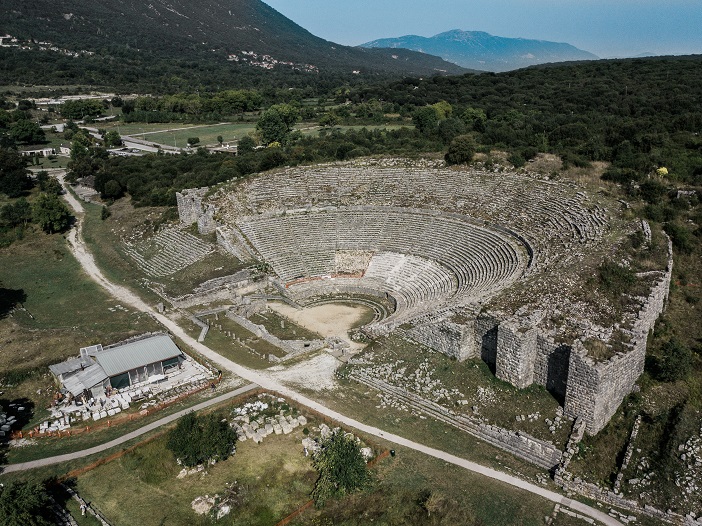The EU-funded Cultural Route of the Ancient Theatres project has created a 344 km tourist trail around five ancient architectural treasures in the Greek region of Epirus. Dating back up to 2 500 years, the locations covered by the trail are the theatres of Dodona, Gitana, Amvrakia, Kassope and Nikopolis, and the surrounding archaeological sites.
The Ancient Theatres of Epirus Cultural Route, Greece
- 07 September 2020
The cultural route follows a European and international trend. Visitors want to come and experience a holistic product – to get a complete, unique experience. The impressive ancient theatres of Epirus are only the beginning. It is a journey back in time that finally leads you to Epirus' charming, multi-faceted present.
A key part of the project was the restoration of the sites, which are among Greece’s most important ancient theatres. One objective is to attract visitors from Greece and elsewhere interested in archaeology, history and the arts to see the landmarks for themselves.
However, the goal goes beyond this, with the partners also encouraging visitors to learn about the theatres and use them as a gateway to experiencing the present-day culture of Epirus. To support this vision, a business cluster comprising hotels, restaurants, tourist agencies and local producers has been established.
A nucleus of public life
In ancient Greek city states, theatres were a principal meeting point for citizens, who gathered to watch dramatic performances, many with a religious and educational purpose, and to attend citizens’ councils. Just as theatres were the nucleus of life in the ancient city, they were chosen as the centrepieces of the cultural trail, providing the basis for a rich, multi-dimensional and holistic experience.
Holding more than 15 000 spectators, the 3rd-century-BC theatre at Dodona was one of the largest in antiquity and the scene of contests involving wild animals and gladiators. Built around 28 BC, the site at Nikopolis blends Greek and Roman architecture and includes a 2 000 seat theatre, a 1 000 seat odeon for musical performances and a 10 000 seat stadium.
Overlooking the Ambracian Gulf, the 3rd-century-BC Kassope site contains a 3 000 capacity theatre with a uniquely shaped orchestra pit and a 1 500 capacity theatre which hosted citizens’ councils. Dating from the 4th century BC, the Amvrakia theatre is the smallest-known ancient Greek theatre. Finally, the 3rd-century-BC Gitana theatre sits on the banks of the Thyamis river and many of its 4 000‐5 000 seats are engraved with people’s names.
Restoration work
Among the restoration tasks under the project were maintenance and enhancement of stands, benches and the sanctuary of Zeus at Dodona, removal of soil from the stadium and renovation of the stage, perimeter wall, arcade, entrances and seating in the theatre at Nikopolis.
A tourism product with a common brand identity was created, together with branded merchandise. Digital tours were organised and uniform signage was installed at all sites, while Wi-Fi, water and electricity infrastructure and transport connections were also set up.
Total investment and EU funding
Total investment for the project “Cultural Route of the Ancient Theatres” is EUR 24 000 000, with the EU’s European Regional Development Fund contributing EUR 19 200 000 through the “Epirus” Operational Programme for the 2014-2020 programming period. The investment falls under the priority “Protection, development and promotion of public cultural and heritage assets”.

